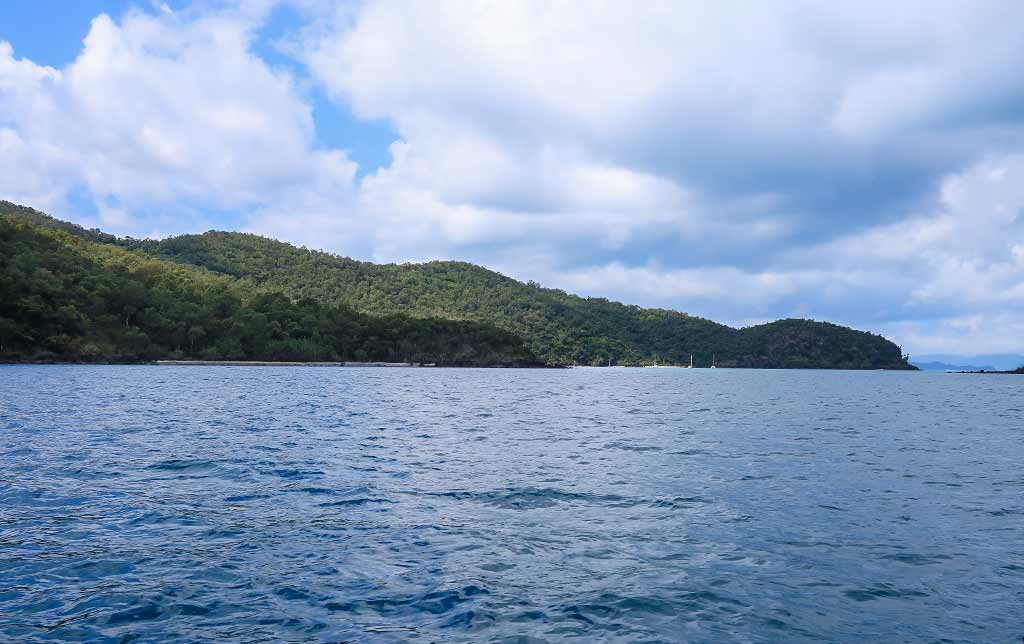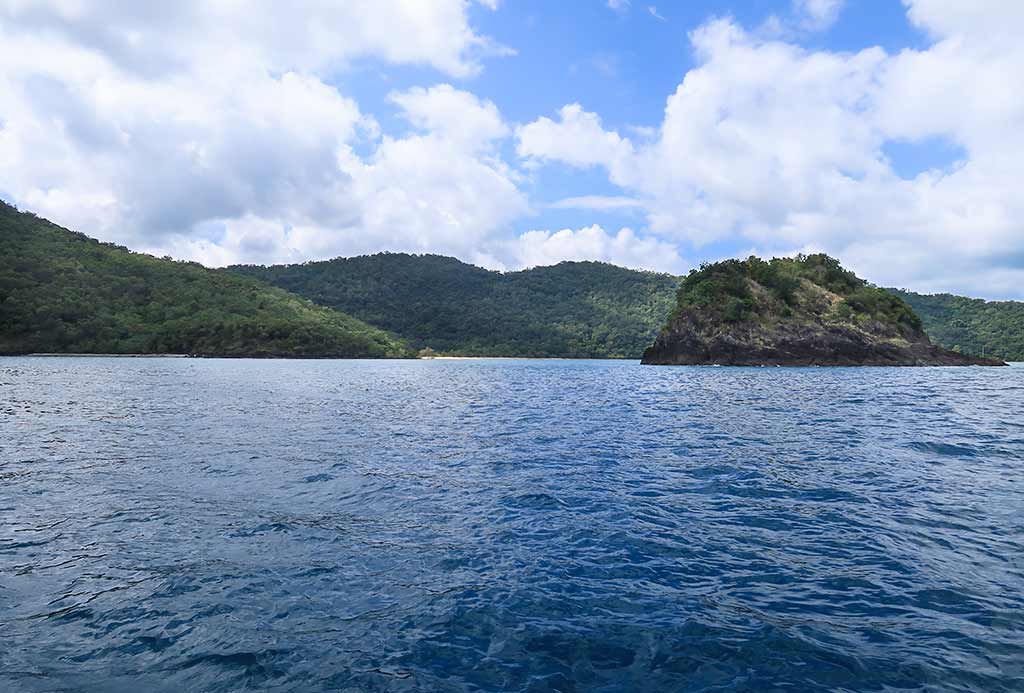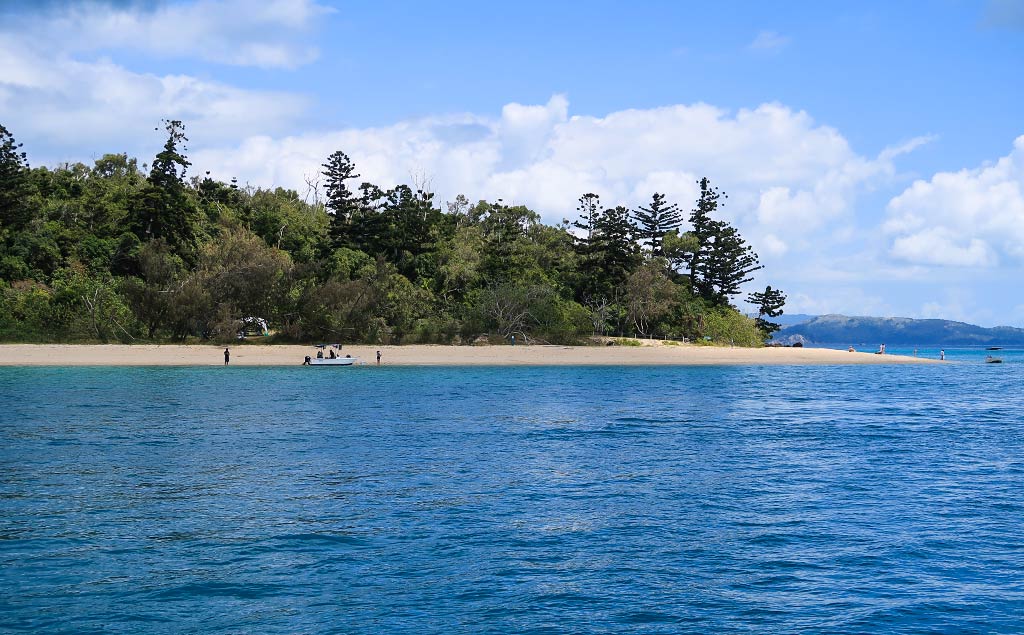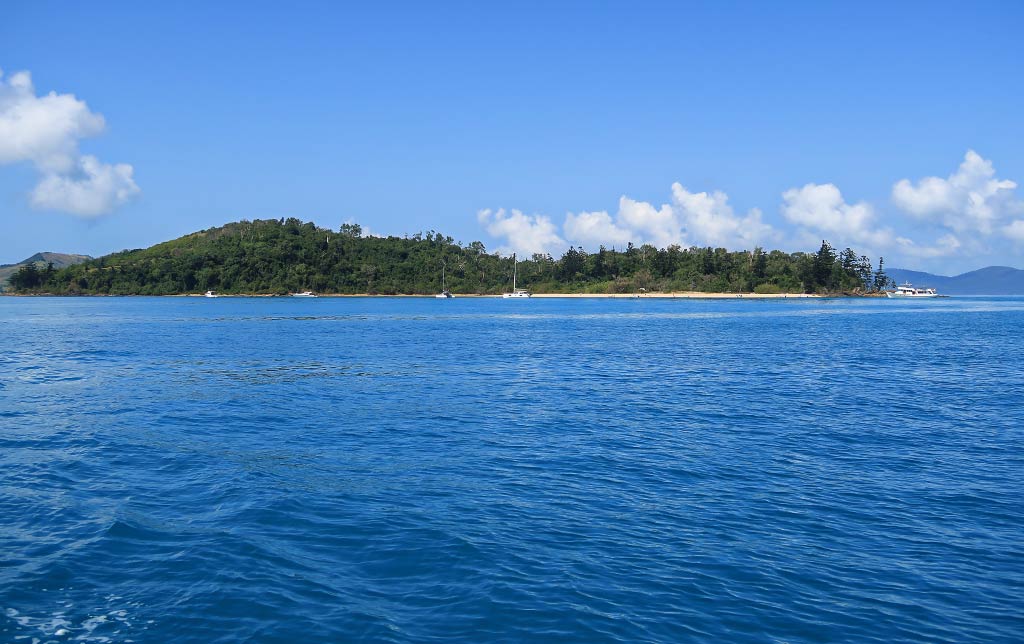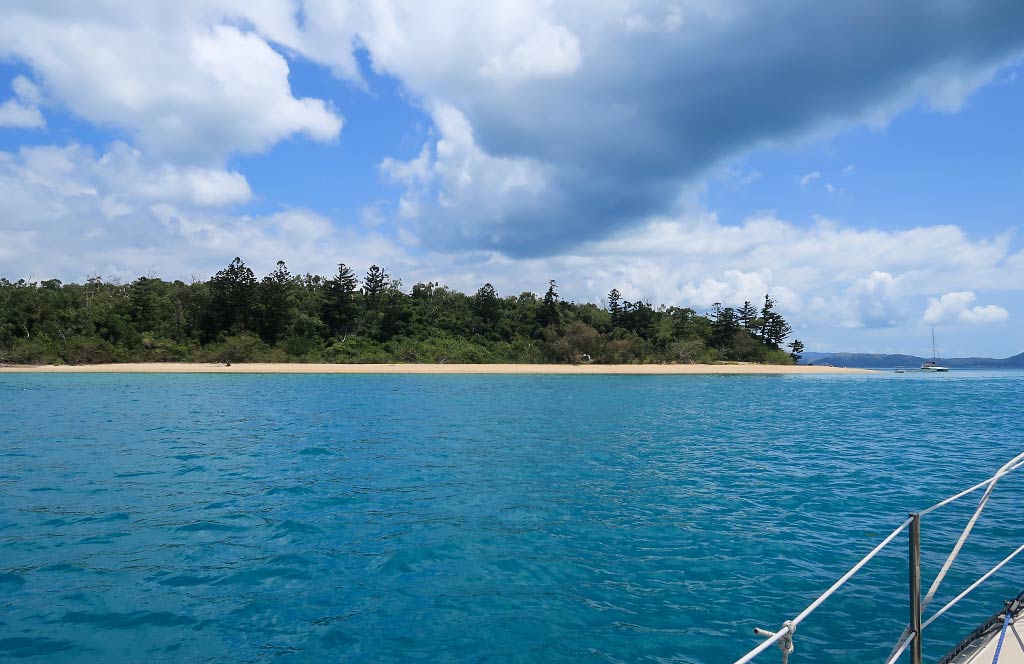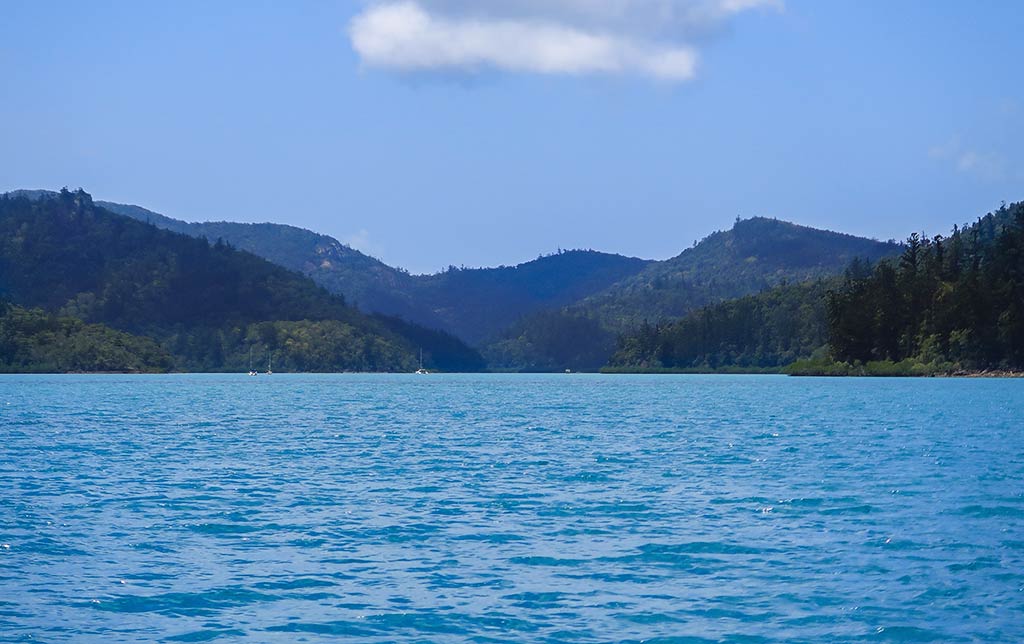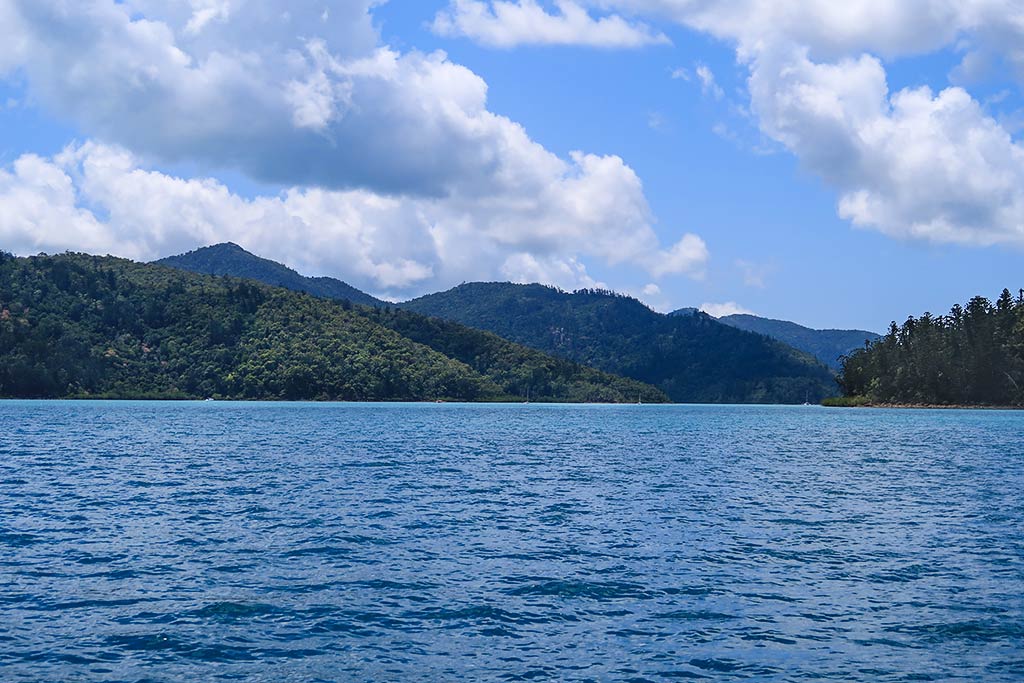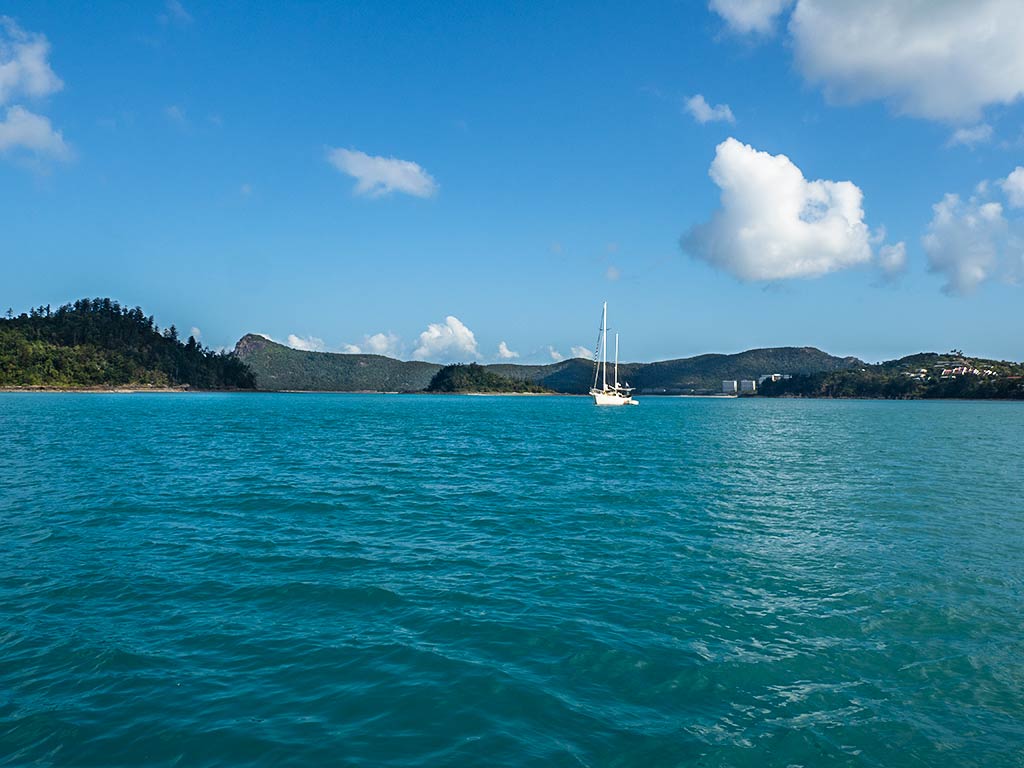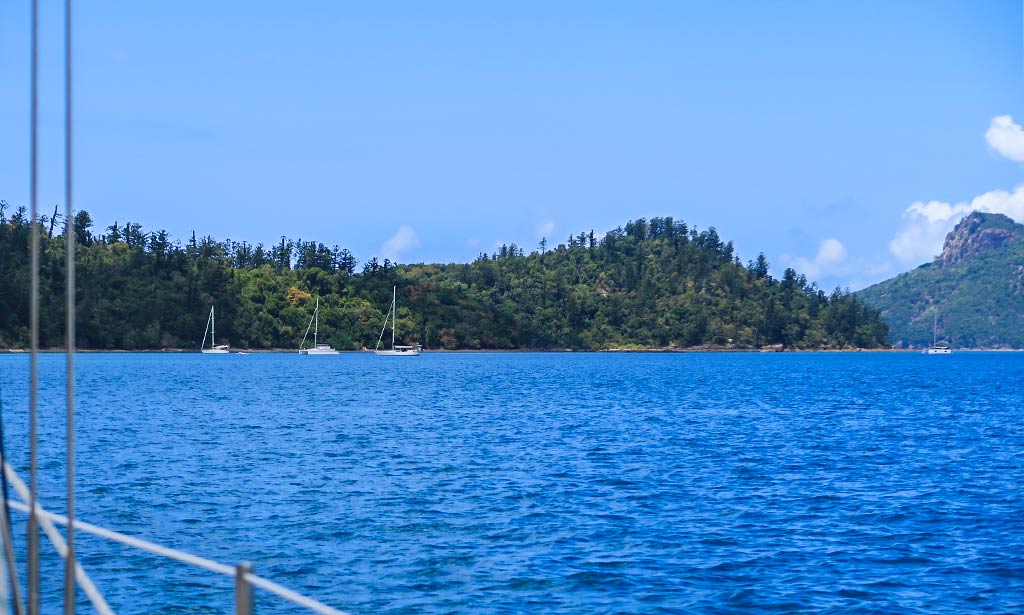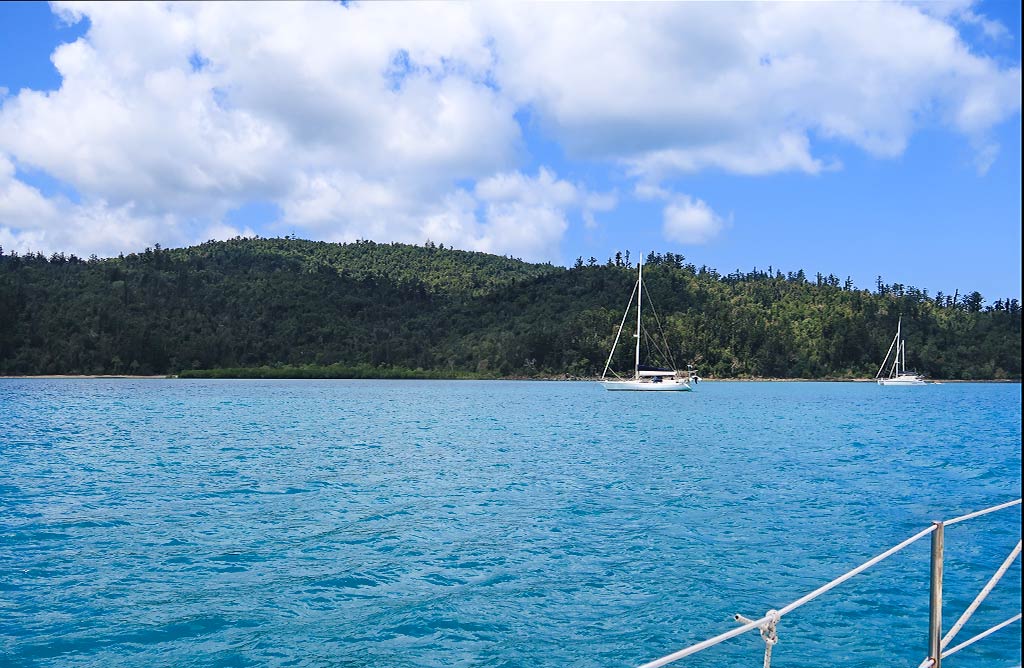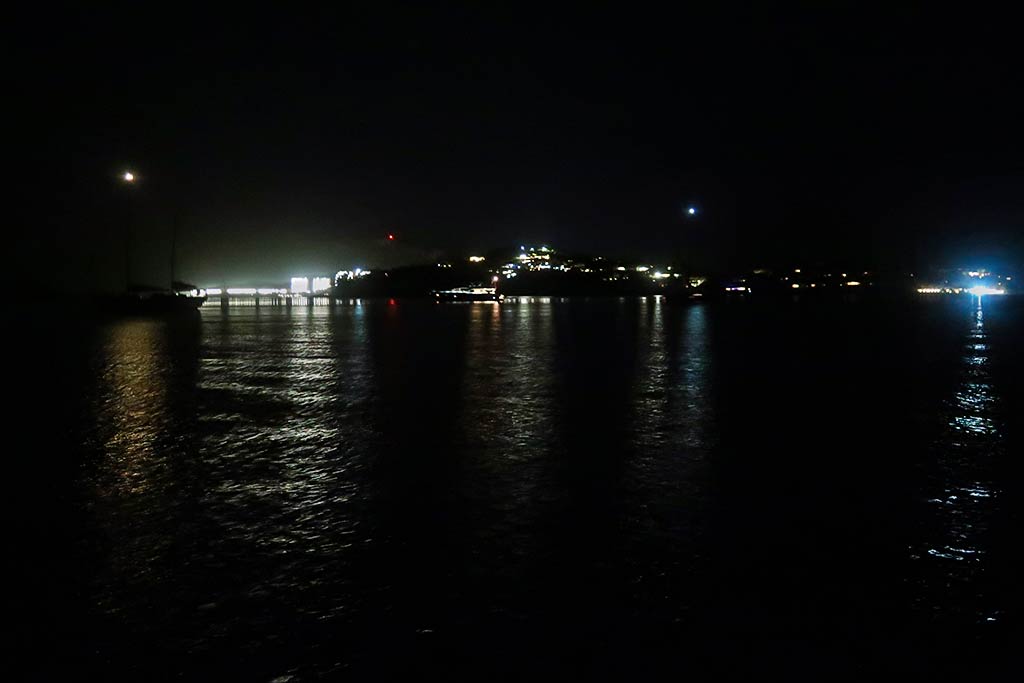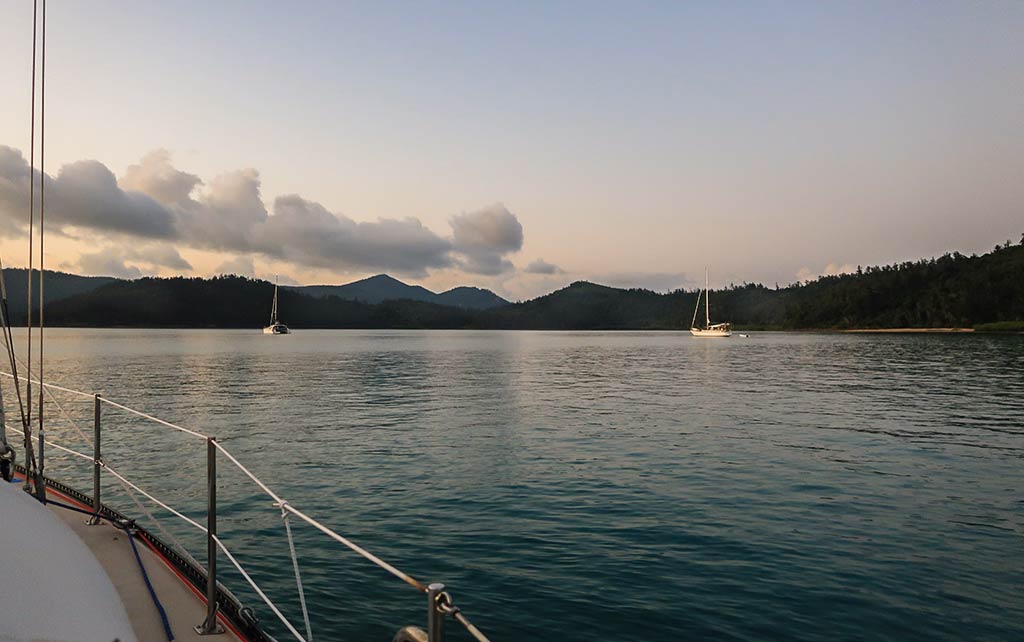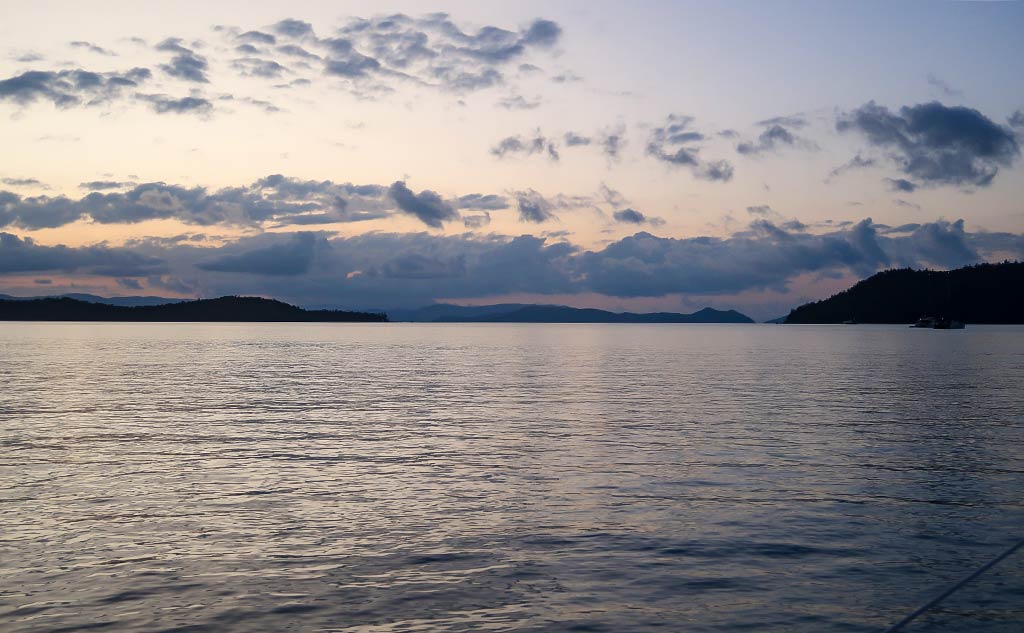Posted September 18, 2024
about September 25, 2022
Today we had a couple of anchorages to check out. The first was nearby, on Cid Island just outside of the harbor. It wasn’t our first choice, but if it seemed enticing enough, that was where we’d stop.
Below, a map showing the general area.






We left Cid Harbour, motoring out through the north channel. This gave us a look at the harbor’s north side, followed by a stunning view of Hook Island’s mountainous silhouette, a place we planned to visit in the future.
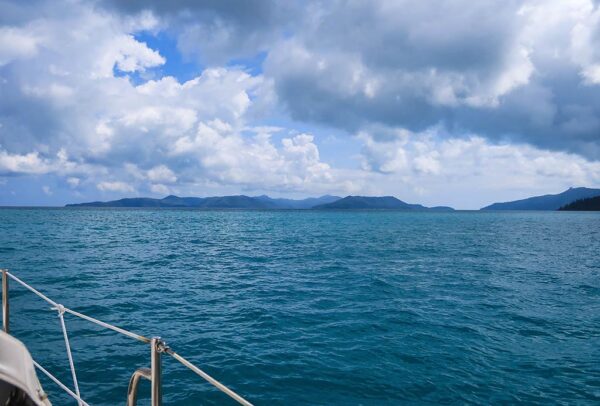
Today, however, we were heading in a different direction, and our first potential anchorage was just around the corner on Cid island (photo below).
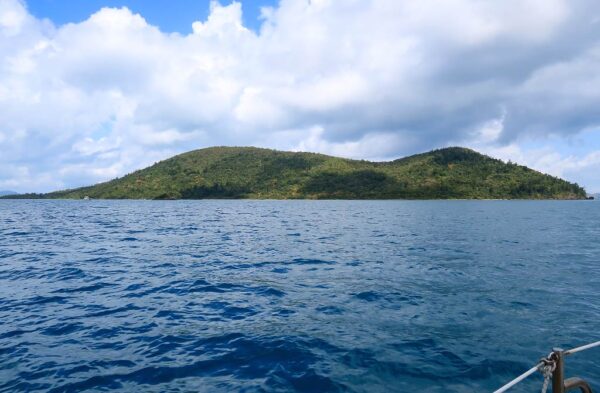
As we passed Cid Island, we could see a few boats anchored off the beach in an area known as Homestead Bay. Though it looked nice enough, we didn’t feel enticed to stop.
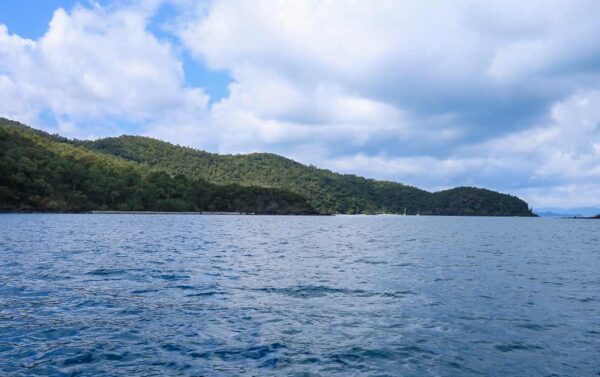
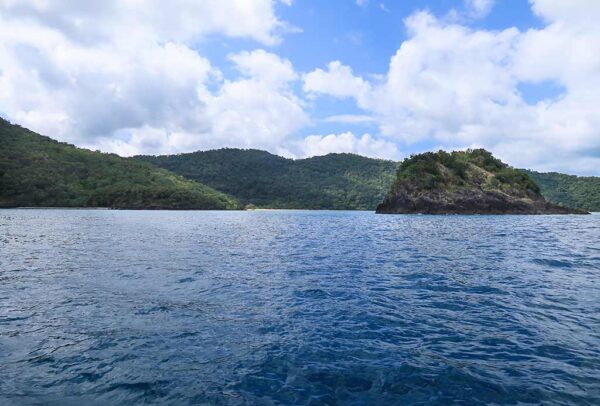
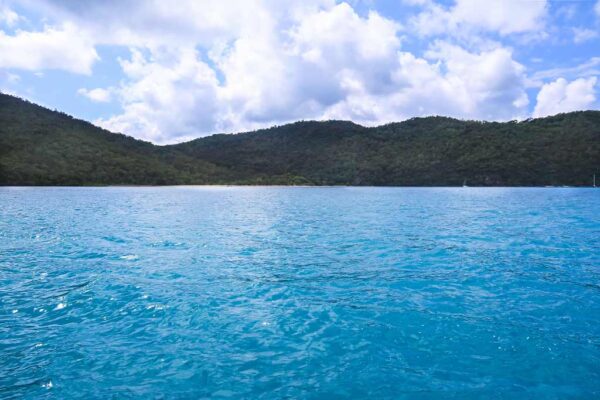
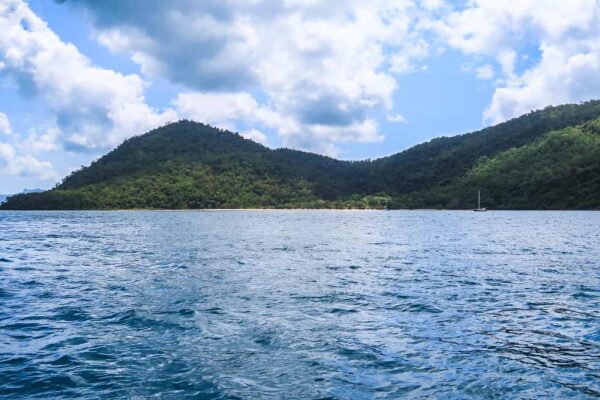
Instead, we decided to go a bit further, to a pretty little island we’d passed the previous day, Henning Island.
There are a few anchorages around the Whitsunday Islands that have installed moorings, both to protect the coral and enable boats to stay reasonably close to shore. Henning Island is one of those places.
Unfortunately, being on a mooring in an area with strong currents, like the Whitsunday Islands, has a serious drawback. When the current is pulling the boat away from the mooring, all is well. But when it goes slack or switches unfavorably, the boat can end up next to the mooring float and banging against it. It’s hard to overstate just how unpleasant it is to listen to the consistent banging of a mooring ball against the hull. This noise steals both sleep, and sanity.
We’ve had this problem before, and sometimes it’s possible to actually pick up the float and put it on deck, or hang it from the bow so it’s out of the water. However, these particular moorings had clear signage warning that shortening the mooring line was prohibited and could result in a fine for the boat owner. To further discourage this practice, these floats had been made to be particularly heavy, too heavy to lift onto the boat.
Despite this, we decided to give the mooring a try for a few hours. Once we were tied up, we had a lovely view of Henning Island’s beach and native bush vegetation.
(Below, photos of our approach to Henning Island, our mooring float, and our view of Henning Island from the mooring.)
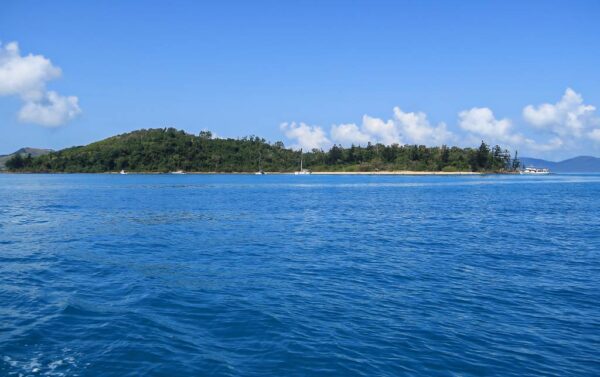
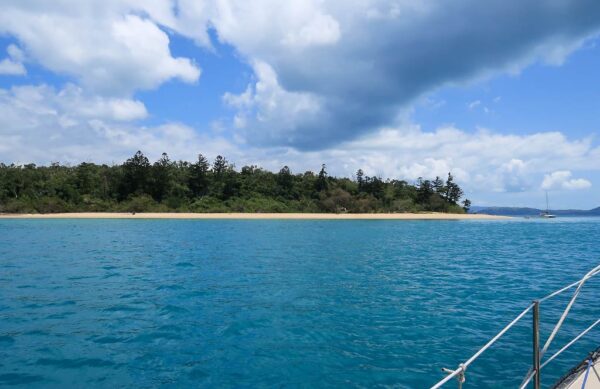
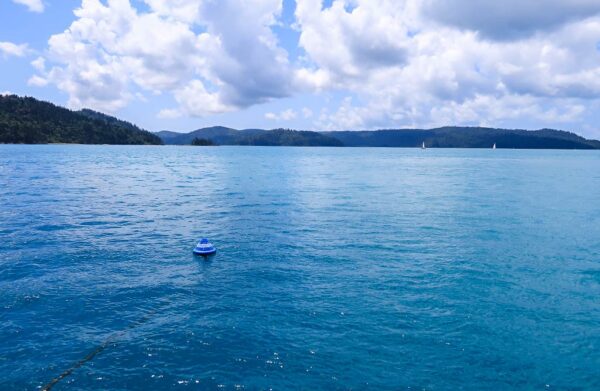
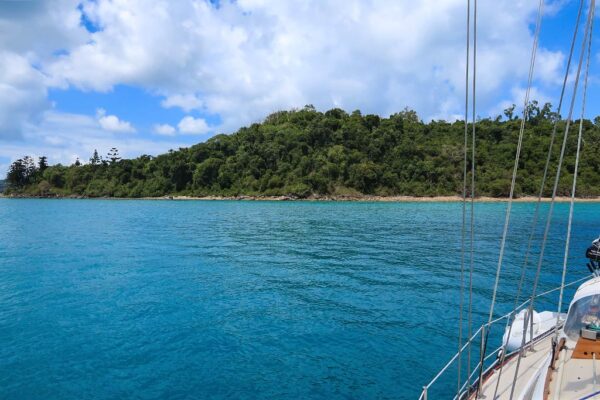
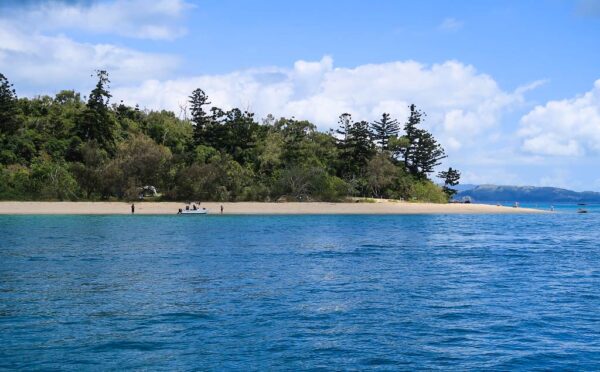
But soon, the inevitable banging noise began, and our reaction was, “No, just no.” After a bad experience with a similar mooring situation in New Zealand, we have lost all tolerance for that obnoxious noise. We dropped the mooring and headed back over to Whitsunday Island.
Rich had been intrigued by an area known as the Gulnare Inlet, a deep and narrow harbor cutting into the island. We took a look and it was beautiful, with mountains lining both sides of the inlet. It was an impressive sight, but much of the inlet was too shallow for our boat.
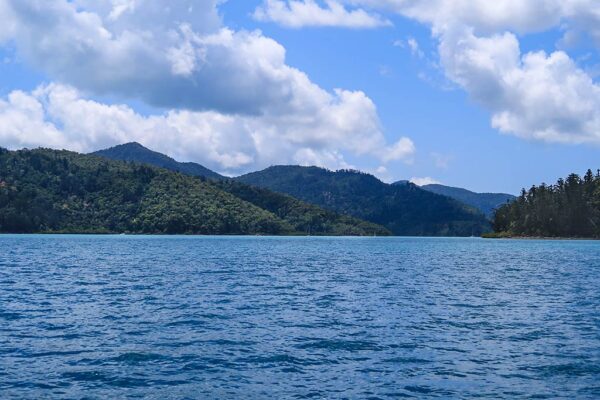
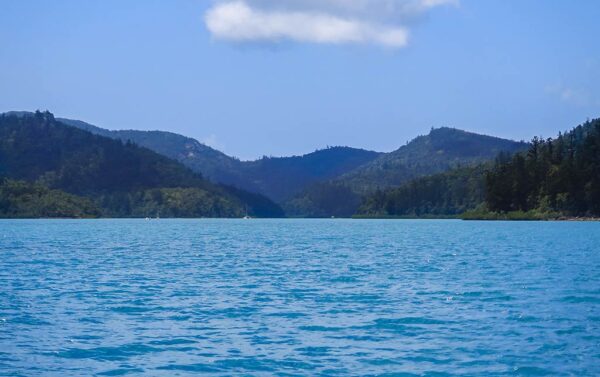
Instead, we decided to anchor at a spot near the inlet’s entrance. It turned out to be a lovely place to spend the rest of the day. We also had a surprisingly close-up view of Hamilton Island just to the south.
(Below is a photo gallery of the anchorage including our view of Hamilton Island in the bottom right photo.)
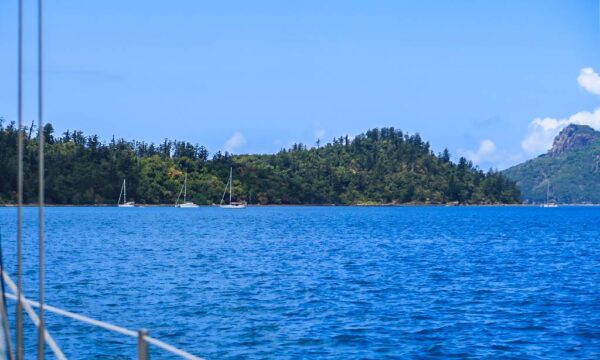
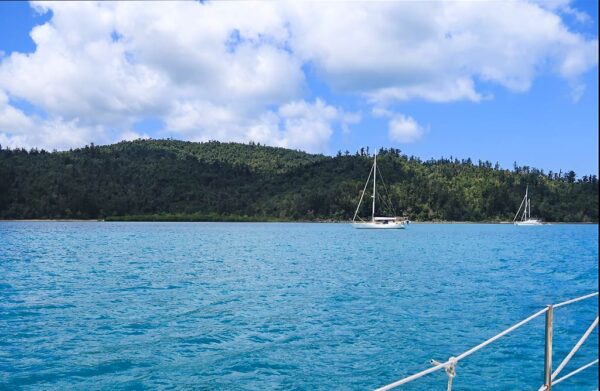
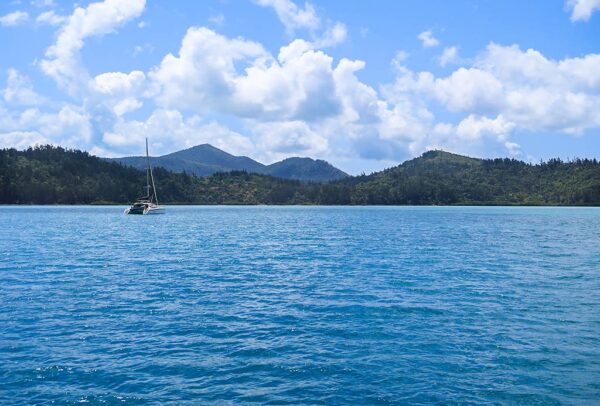
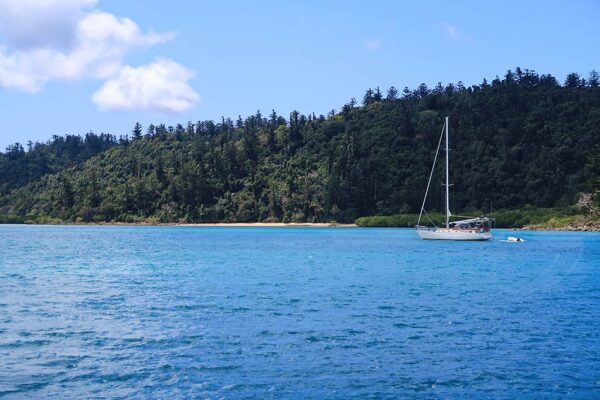
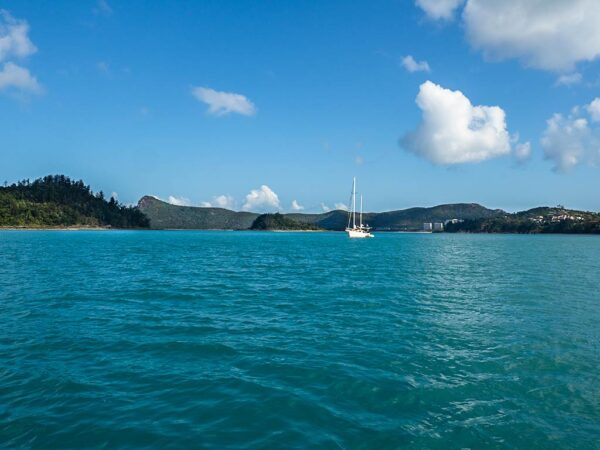
Later, we enjoyed a lovely sunset, followed by the sight of a dusky sky filled with flying foxes (fruit bats) heading out for their nocturnal activities. As darkness settled in, the bright lights of Hamilton Island came into view.
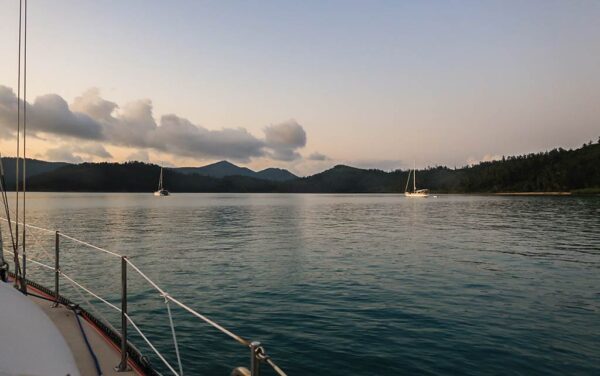
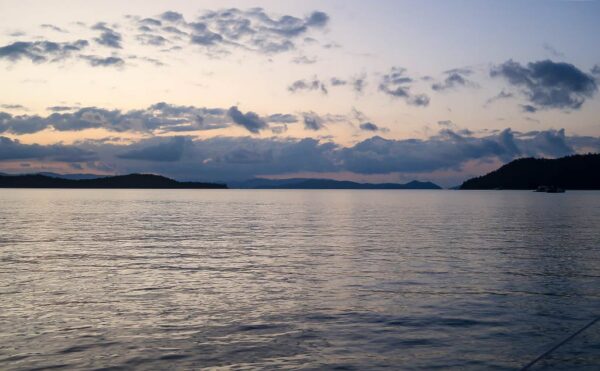
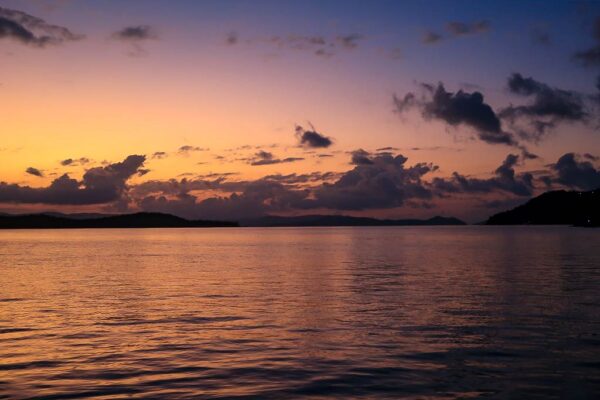
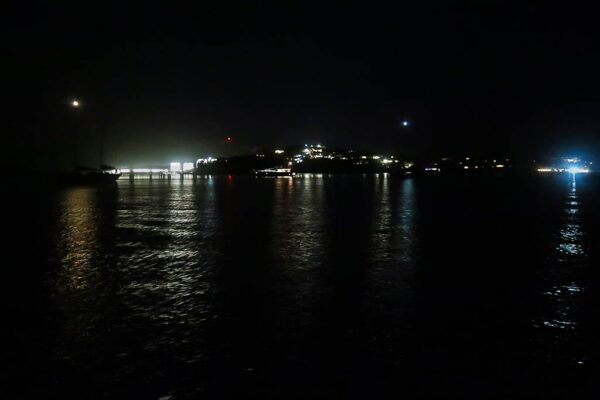
Earlier today, this area felt remote and wild, but tonight the city lights were a reminder that civilization wasn’t far away. –Cyndi









